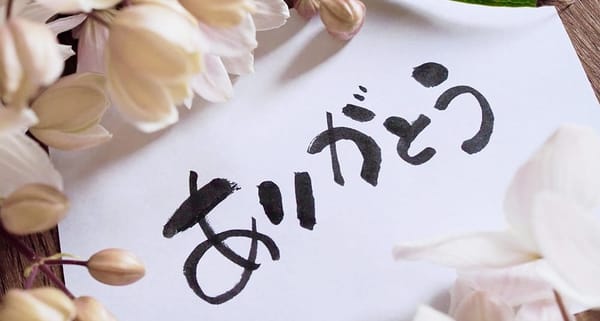Why Rice Prices Are Rising in Japan — And What You Can Do About It
A breakdown of Japan’s rice shortage: climate, policy, and price. Here’s how to shop smart and support a fragile food system.

In a country where rice is consumed by 80% of its people everyday, a shortage in supply is no small matter. Japan is currently facing a notable rise in rice prices and a visible strain on its rice economy, drawing attention from both media and consumers.
For foreign residents who may be unfamiliar with the deeper dynamics behind this issue, understanding the cause and effect can feel overwhelming. It doesn't help that the headlines on this issue ranges from climate instability, political policy criticism, and shifting agricultural economics.
Today, we're going to break this down and take a closer look at exactly why rice prices are rising in Japan, what's driving the shortage, and how consumers like us can react more consciously.
A Staple Beyond the Plate
Rice (米, kome) is not just a carbohydrate in Japan; it’s deeply embedded in daily life and seasonal rhythms. And on a practical level, rice is one of the few crops for which Japan maintains near-complete self-sufficiency — and is a cornerstone of Japan's national food security policy.
According to the Ministry of Agriculture, Forestry and Fisheries (MAFF), Japan’s domestic rice consumption hovers around 7–8 million tons annually. This makes rice one of the few products where the country relies almost entirely on its own production — making any disruptions to the local harvest immediately impactful.
One of the primary triggers for the current rice shortage is the extreme weather that hit Japan in 2023.
The Japan Meteorological Agency reported that the summer of 2023 was the second hottest on record, with average temperatures 1.76°C higher than usual. This level of heat, paired with irregular rainfall and localized droughts, placed significant stress on rice crops across major growing regions such as Niigata, Akita, and Yamagata.
As a result, rice yields dropped sharply. Some regions reported harvests that were 10–20% below average. Moreover, even where rice could be harvested, the quality suffered. The proportion of “first-grade rice” (一等米), used for premium consumer sales, declined due to damaged kernels and irregular ripening.
For many consumers, this translated into higher prices at the supermarket and a growing scarcity of preferred rice varieties.
Another major contributor to the current situation is Japan’s exposure to global agricultural input markets — particularly fertilizer.
In the wake of Russia’s invasion of Ukraine in 2022, global fertilizer supplies tightened. Russia, a top exporter of nitrogen- and phosphate-based fertilizers, cut back exports and raised prices. According to World Bank estimates, global fertilizer prices increased by over 200% between 2021 and 2023.
Japanese farmers, already aging and financially pressured, were hit hard by the cost spike. Some reduced fertilizer usage to save on input costs, while others delayed or scaled down planting. This particularly affected rice paddies in marginal regions where profit margins are already slim. In turn, lower yields and inconsistent quality became more common.
Adding to the complexity is a shift in Japanese agricultural policy regarding “feed rice” — rice grown not for human consumption, but for livestock feed.
Over the past decade, the government had actively encouraged farmers to produce feed rice as a way to maintain paddies while reducing edible rice overproduction. Subsidies were provided to make feed rice a financially viable option.
However, in 2023, these subsidies were dramatically reduced. This policy change, aimed at aligning with broader agricultural reforms, caused many farmers to abandon feed rice production altogether. As the Mainichi Shimbun reported, this reduction led to a significant decline in feed rice availability, which in turn forced livestock producers to import more corn and grain from overseas.
This added further strain to Japan’s food self-sufficiency goals — and indirectly impacted rice-related production patterns and pricing.
All these factors converged to disrupt the delicate balance of Japan’s rice economy.
Wholesale prices of popular rice brands such as Koshihikari and Hitomebore have increased by 10–15% compared to previous years. Supermarkets have begun passing these costs onto consumers, while restaurants and bento suppliers are looking for ways to maintain menu prices without compromising quality.
At the same time, rice farmers are not necessarily seeing higher profits. Many continue to struggle under rising costs and labor shortages. Japan’s farming population is aging rapidly, with over 70% of farmers above the age of 65.
Without generational handovers or rural revitalization, rice production is expected to decline further — regardless of weather or global shocks.
What Can We Do? Toward Conscious Consumption
For residents of Japan — especially foreign nationals who may be unfamiliar with the nuances of Japanese agricultural policy — this issue offers a chance to become more informed and engaged as consumers.
While rice may seem like a basic grocery staple, every bag purchased represents part of a larger system tied to climate, economics, and tradition. Here are a few actions conscious consumers can consider:
1. Learn to Identify Locally Produced Rice
Buying domestically produced rice (国産米 / kokusanmai) helps sustain Japan’s self-sufficiency, and buying regionally produced rice (地元産 / jimoto-san) can reduce transportation costs and emissions. How to spot it:
- Check the label for production area: Look for names like 新潟県産 (Niigata-kensan), 北海道産 (Hokkaido-san), or 秋田県産 (Akita-ken-san) printed near the name of the rice.
- Avoid imported rice blends, which are often labeled 加工米 (processed rice) or ブレンド米 (blend rice). These may contain rice from the U.S., China, or other countries.
- In Tokyo, look for rice grown in nearby prefectures like Chiba (千葉県産), Ibaraki (茨城県産), or Saitama (埼玉県産) as a “regional” choice.
2. Support Diverse Rice Varieties
Rather than focusing only on high-demand brands like Koshihikari, try supporting regional or lesser-known varieties. These often come from smaller-scale farms and are less susceptible to large market price swings.
Some excellent, underrated varieties include:
- Akitakomachi (秋田こまち) – From Akita, slightly firmer and aromatic
- Milky Queen (ミルキークイーン) – A soft, sticky rice developed from Koshihikari but more forgiving in cooking
- Hitomebore (ひとめぼれ) – Popular in Tohoku, milder flavor and cheaper than Koshihikari
- Tsuyahime (つや姫) – From Yamagata, known for its glossy texture
- Nanatsuboshi (ななつぼし) – From Hokkaido, versatile and affordable
Ask store staff for recommendations or check the rice corner at departmental store basements, which often carry a wider range than your nearest local supermarket.
3. Please Do Not Hoard Rice — Buy What You Need
As rice prices rise, panic buying and bulk hoarding are becoming a problem — especially in urban areas where supermarkets are experiencing sporadic shortages of popular brands. Who will suffer? The people who live in the countryside where distribution is not currently prioritised.
- Rice grains keep for up to 1-2 months in the summer and 3-6 months in winter.
- Usually a 2kg-5kg bag is sufficient for individuals and small households. Please do not buy 10kg+ bags unless you have a large family or specific need.
- Rice is harvested once a year (September–November), and availability is designed the entire country a full year.
4. Time Your Purchases Around Harvest Season
Rice harvested in autumn is shipped to stores between late September and December. This is when freshness is highest, prices are relatively stable, and brands often offer promotions or seasonal packaging.
- Buy during October–November for the best price-to-freshness balance.
- You’ll often see 新米 (shinmai / “new rice”) labels on packaging during this time — indicating freshly harvested rice from the latest crop.
Avoid overbuying before this season, and try to rotate stock in your pantry to make room for new-season rice.
5. Reduce Waste and Use Every Grain
Even small reductions in household food waste help stabilize demand. Japan wastes over 5.2 million tons of edible food annually (MAFF, 2022), and rice is one of the most commonly wasted staples.
- Freeze leftover rice in small servings (wrap in plastic or use reusable containers).
- Use cold rice for fried rice, ochazuke (tea rice), or onigiri.
Japan’s rice shortage is not a single-issue problem — it reflects a complex web of climate vulnerability, global economic dependencies, and domestic agricultural challenges.
As the country navigates its way through this supply strain, consumers, too, play a role. By understanding the wider picture and making thoughtful purchasing choices, residents of Japan — Japanese and foreign alike — can contribute to a more resilient and sustainable food system.



